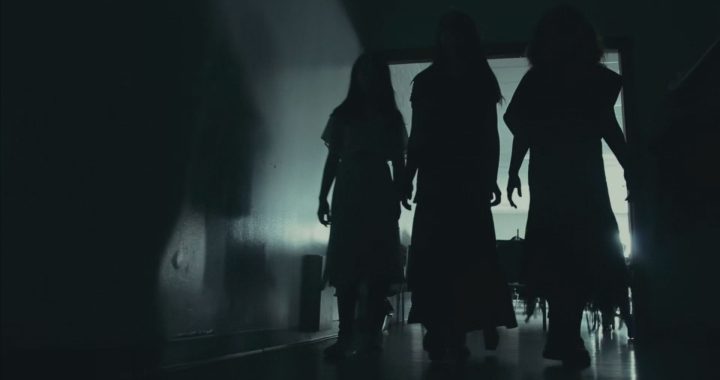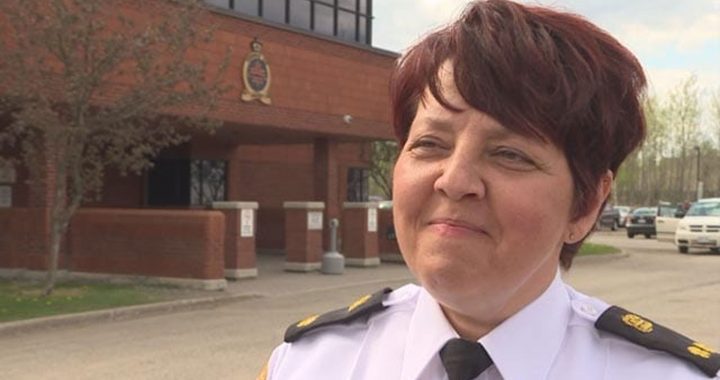Sara Rumbolt can’t talk about the terrifying events of last spring without tearing up.
Like many in the community of Mud Lake, Labrador, she believes the Muskrat Falls hydro project upstream is at least partly responsible for their brush with disaster.
“We fed the kids supper, got them a bath, put them to bed, tried to act as if nothing was too bad for their sake because we didn’t want them being concerned,” Rumbolt recalls, after describing the rushing, ice-filled water that surrounded her family’s home.
Rumbolt and her husband Carl began building their home a year and a half ago. Like many houses in the remote community, theirs sits along the banks of a scenic channel that winds from an upstream lake down into the mouth of the lower Churchill River.
During the winter months Mud Lake is accessible by snowmobile. The rest of the year locals commute to and from Happy Valley-Goose Bay by boat.
In the community’s almost 200-year existence, locals say they’ve never seen or heard of an event like the one during the early morning hours of May 17, 2017, when floodwaters stranded some in their homes and forced others to flee to neighbours’ on higher ground.
“It was snowing and raining and cold,” Rumbolt recalls. “The kids…didn’t know what was going on to be woke up in the middle of the night, put in their snowsuit and be thrown in the boat in the dark.”
Nearby, Jim Brown was home alone when the water subsumed his house.
“The water just started coming bubbling right up through the floor and in through the doors. And in seconds, it was just like that,” he recalls.
The previous day, on May 16, Mud Lake residents watched the water in their community get higher and higher, but no one expected it to breach the banks and flood their homes.
Each spring ice jams up at the mouth of the Churchill River, backing up water in the channel to Mud Lake.
“It got like that every spring, but it just kept on going. It didn’t stop this time,” says Marion Broomfield, who has lived in the community for more than 80 years.
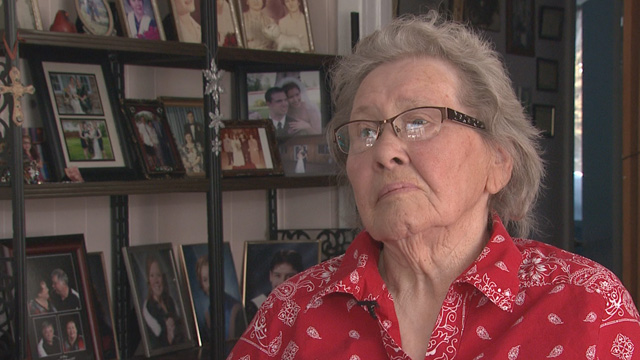
By nightfall many were concerned. Some went to bed; others stayed up to monitor the situation.
“I didn’t know if we were going to die,” Rumbolt says, describing the moments when she put her three children in a boat to head across the channel.
Their life jackets were in storage for the winter, the water was full of ice and timber, and all they had to navigate the boat was a flashlight.
“I just prayed to god and kept shining the flashlight and we made it to my father-in-law’s, thank God.”
Residents waited until daylight before helicopters airlifted them to safety in an emergency evacuation.
Many of the 50 residents reported to Canadian Red Cross workers in Happy Valley-Goose Bay. Some stayed with family. Others took up temporary shelter at the Canadian Forces Base there.
A few stayed behind in Mud Lake to save their dog sled teams.
A couple days later, after the river’s ice jam broke and water levels receded, residents returned to what Brown describes as a war zone.
“It was just debris everywhere. Decks were out in the backyard and there was 200 gallon drums knocked up against the house,” he says.
Snowmobiles, all-terrain vehicles, generators and other equipment crucial to Mud Lakers’ way of life were lost.
With the exception of her root cellar, Broomfield’s home was spared. The community’s cemetery, where many of her family members are buried, was under water.
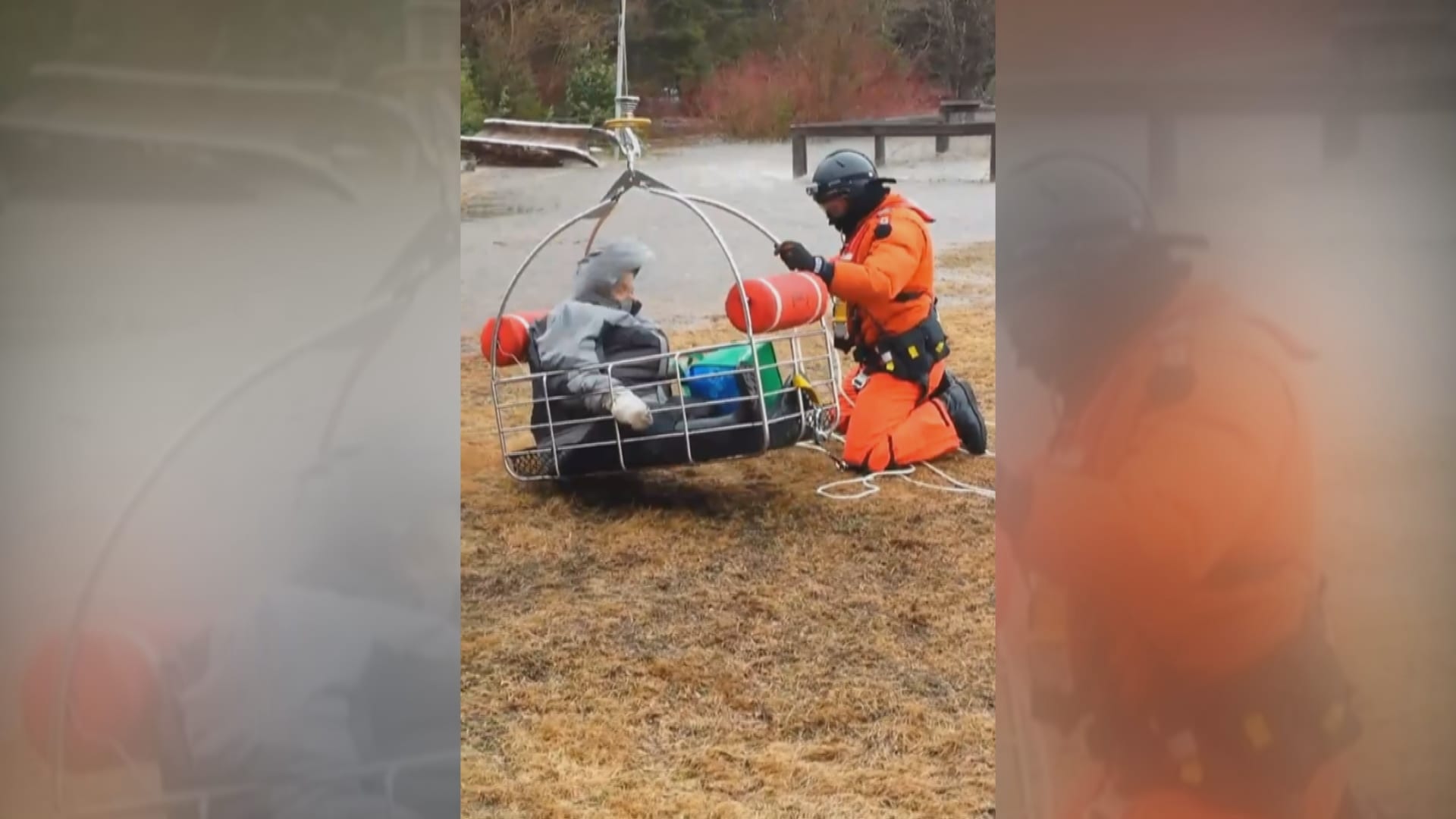
While many homes were spared from severe damage, some like Brown will have to rebuild from scratch.
Still displaced by the flood, Brown and his wife live in a government-subsidized townhouse across the river in Happy Valley-Goose Bay, awaiting spring so they can begin construction on a new home.
He fought with the government over how much was needed to rebuild his home.
“They gave us an offer for which was the final offer and they said that’s it, you can take it or leave it.”
Days after the flood politicians, including Premier Dwight Ball and MP Yvonne Jones, began to visit the community. They promised residents assistance to rebuild their homes, and an independent review to determine whether Muskrat Falls caused the flood.
That review was led by Dr. Karl-Erich Lindenschmidt, an Associate Professor at the University of Saskatchewan’s School of Environment and Sustainability and Global Institute for Water Security.
Lindenschmidt’s report concluded in October 2017 that, despite the flood coinciding with the first overwinter presence of the Muskrat Falls hydro facilities upstream, the event “cannot be attributed to the operations of the [dam’s] spillway.”
Locals believe otherwise.
Differing opinions on Muskrat Falls
“This is the very first year the project was operational, and the very first year we have a flood,” says Melissa Best, chair of the Mud Lake committee.
She said when Dr. Lindenschmidt visited Mud Lake to collect local knowledge on the river, and the behaviour of the ice and water, she was sure he would find that the hydro facilities 30 kilometres upstream played a role in the flooding.
“Everybody felt so defeated because we don’t trust Nalcor, we don’t trust the government. We trust each other,” she says, recalling the day the results of the independent assessment were announced.
Robert Way, a post-doctoral fellow at the Labrador Institute who studies environmental change in Labrador, grew up on the banks of the Churchill River in Happy Valley-Goose Bay.
After reading Lindenschmidt’s report, he acknowledges there is “more evidence to suggest that [Muskrat Falls] didn’t influence this particular event in a strong manner,” but that the issue of how Nalcor will continue to regulate the flow of the river is “a lot muddier.”
Way says the report “suggests that the magnitude of ice jams will increase in the future, and that, resultingly, ice jam flood events may increase.”
He says “ice monitoring, and the impacts of it on people, have not been done to a sufficient degree since [Muskrat Falls] was initiated.”
Nalcor did not make anyone from the province’s crown energy corporation available for an interview.
Spokesperson Karen O’Neill told APTN that in addition to ice monitoring Nalcor has been doing to fulfill its obligations under the Muskrat Falls environmental assessment and Joint Review Panel recommendations—“the scope of [which] did not include flood forecasting,” she explains—the corporation also implemented an “ice thickness pilot study” last fall.
That study, she says, includes a survey of the lower Churchill River during the freeze-up and break-up period using “ground penetrating radar” technology from a helicopter, coupled with ice core sampling.
Way says he has questions about the new monitoring regime’s methodology and the extent to which Nalcor plans to share the information with the public, including the people of Mud Lake.
“That type of survey can be useful in some regards, but it still is not what is needed necessarily in order to be able to predict these events,” he says.
“Considering the role this project will play in impacting ice downstream, and the importance of ice conditions, not just for flooding but on community travel and traditional activities, I don’t think it’s enough to just say we’re going to measure at two times of the year…and then hopefully be able to predict whether flooding is going to occur.
“Unless they’re planning to be doing these surveys continually throughout the winter, then we really don’t have an indication of how robust this type of program would be.”
Responding to the independent report, last month the province announced it was installing new water level and climate monitoring stations “to monitor water and ice levels and use the data for flood forecasting and alerts.” They have also made the data available online, though at the time of publication the ice thickness data had not been updated for a month.
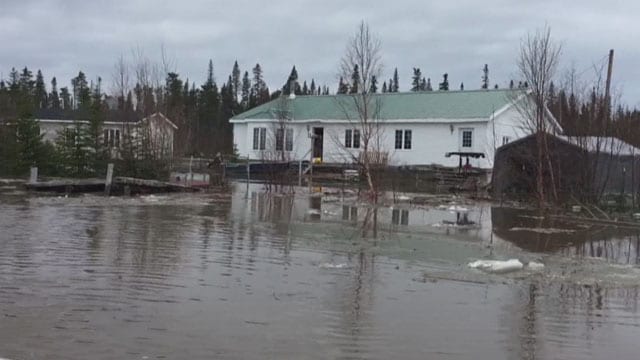
Way says the government’s efforts are “certainly useful,” but that “unless this is combined with more monitoring and modelling it won’t be as useful as needed.”
In late February Nalcor officials met with representatives of Mud Lake. Best requested that APTN attend the meeting, but Nalcor refused.
Best said Nalcor offered to pay for a consultant to devise an emergency evacuation plan for the community.
Way said the independent assessment of the flood identified three reasons why Muskrat Falls could contribute to flooding in the future, including an increase of the amount of ice that is projected to flow downstream, a change in the freeze-up and thawing periods due to the thermal effects of the dam’s reservoir, and changes in the amount of water released from the reservoir.
“Out of the three factors, two of them I think going forward, there’s nothing that they can do to change them so they’re going to have to figure out mitigation measures. And the third one, if they have a good monitoring program in place they should be able to I guess reasonably reduce that impact,” he says.
“But the challenge is, they don’t have a huge amount of storage at Muskrat Falls — it’s the Upper Churchill [dam] that has the big storage — so if Upper Churchill decides to release a lot of water, they can’t really hold back a lot of water at Muskrat.
“So ultimately, in order to consider flood management on this entire river, you have to be not just considering Muskrat but considering Churchill as well.”
The North Spur: a bigger concern
As they await the spring thaw in the coming weeks and months, Mud Lakers are also fighting another battle with Nalcor and the province, over what they believe is an unstable part of the dam.
The North Spur is a peninsula that juts out into the Churchill River, connecting the rest of the land with Spirit Mountain, a sacred place for the Innu. The Spur is comprised primarily of sand and marine clay, or “quick clay,” a substance that can liquefy when exposed to water.
During early stages of construction for the dam Nalcor unearthed tens of thousands of Innu artifacts in the area dating back thousands of years, exposing pieces of a rich and ancient history of the First Peoples who inhabit the area.
Elders, engineers independent of the project and many residents in the area believe the North Spur will not be able to permanently hold back the water once the dam’s reservoir is fully flooded in 2019.
“We know that the next [flood] is coming,” says Best, explaining many have been asking Nalcor to present evidence that lives are not being put at risk.
Nalcor has continually downplayed concerns around the instability of the North Spur, saying they’ve stabilized the area — but locals are skeptical.
Randy MacMillan is a Mechanic Engineering Technologist and was one of the drillers who collected core samples on the North Spur in 2013.
“It’s just a typical job that you would do for any customer. In this particular instance though it was an anomaly to me because we never ever once hit bedrock,” MacMillan recalls of the work he did.
“Every 40 feet there would be some clay, water, clay, water — kinda like a cake.”
He says he’s “adamant” that people’s lives downstream “are in jeopardy.”
Renowned retired Swedish engineer Dr. Stig Bernander, who has no affiliation with Muskrat Falls other than a personal interest in the project due to its construction atop glacial marine clays, also has grave concerns for the dam.
Bernander visited the Muskrat Falls site in 2013 and has since authored a number of papers that identify what he says are flaws in Nalcor and engineering firm SNC-Lavalin’s assessment of the North Spur.
He fears that if the proper assessments aren’t done and adequate mitigation measures aren’t put in place, a landslide on the North Spur could trigger a dam breach.
Nalcor has commissioned its own reviews of the North Spur, which concluded the area is sufficiently stabilized.
But David Vardy, an economist, retired public servant and former chair of Newfoundland and Labrador’s Public Utilities Board, says Nalcor isn’t taking Bernander’s work seriously and needs to agree to an independent review.
“They don’t agree with the Swedish scientists, but they haven’t told us whether the science that’s been done is sufficient,” he tells APTN.
Vardy says he suspects Nalcor and the provincial government may have reasons for being reluctant to commission an independent review of the North Spur.
“If you look too hard you may find an unsolvable problem which might end up with closing down the project.”
Health impacts
Best says the fear and anxiety of not knowing whether, or when, Mud Lake will flood again, and to what extent, is having an impact on residents’ health.
“We’ve had people that’s been hospitalized — it was their hearts, finding out it was stress-related,” she says, explaining “people are waking up in the middle of the night and just checking that the water’s not too high.”
Brown says his wife had a heart attack in January and was hospitalized for a month.
She attributes the stress her doctor said led to the heart attack to Muskrat Falls and the flooding of Mud Lake.
Brown’s wife is an Indigenous woman and works for the provincial government. Brown says she was told she can’t speak publicly against Muskrat Falls.
“The doctors say it was definitely a stress-related heart attack, and she has been stressed out,” he explains.
“She’s got to slow down and not get so stressed — try to think of something else. Her heart is damaged — they say it gets damaged each time you have something like that happen to it, right.”
Brown says in addition to the flood, the North Spur is “definitely another stressful factor in people’s lives,” and that he “can’t see why [Nalcor] just can’t come out and tell you what’s going on,” adding the province has a responsibility to do the same.
“We don’t want fear to rule us, but we can’t help it,” says Best, explaining how residents are coping with the stress while continuing to push for an independent study of the Spur.
“I pretend like it don’t bother me. I don’t want to give anyone the power that I’m living in fear. And it’s not so much living in fear as it’s living in knowing what’s going to happen next.”
Best recalls the night of May 16, when the water levels rose high enough that ice was banging up against a steel bridge in the community.
She says she could hear it from her home, and that it was eerie.
“I don’t believe in any huge powers or anything, but I think that was a warning. And everybody senses that.
“We need a sense of security brought back to our community. We need to be secure in our homes; everybody is entitled to be safe in their own homes.”




